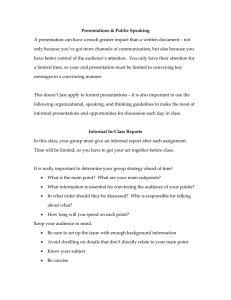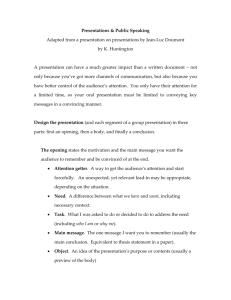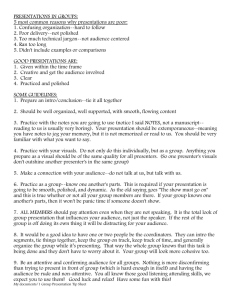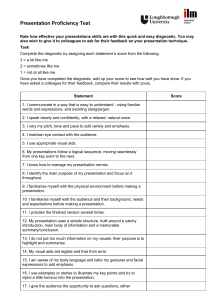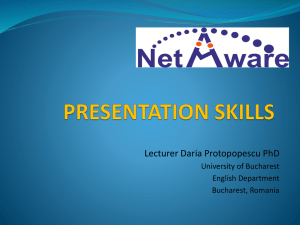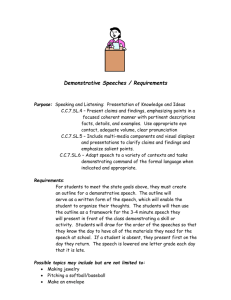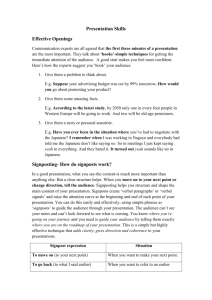Preparing and Delivering Collaborative Presentations
advertisement
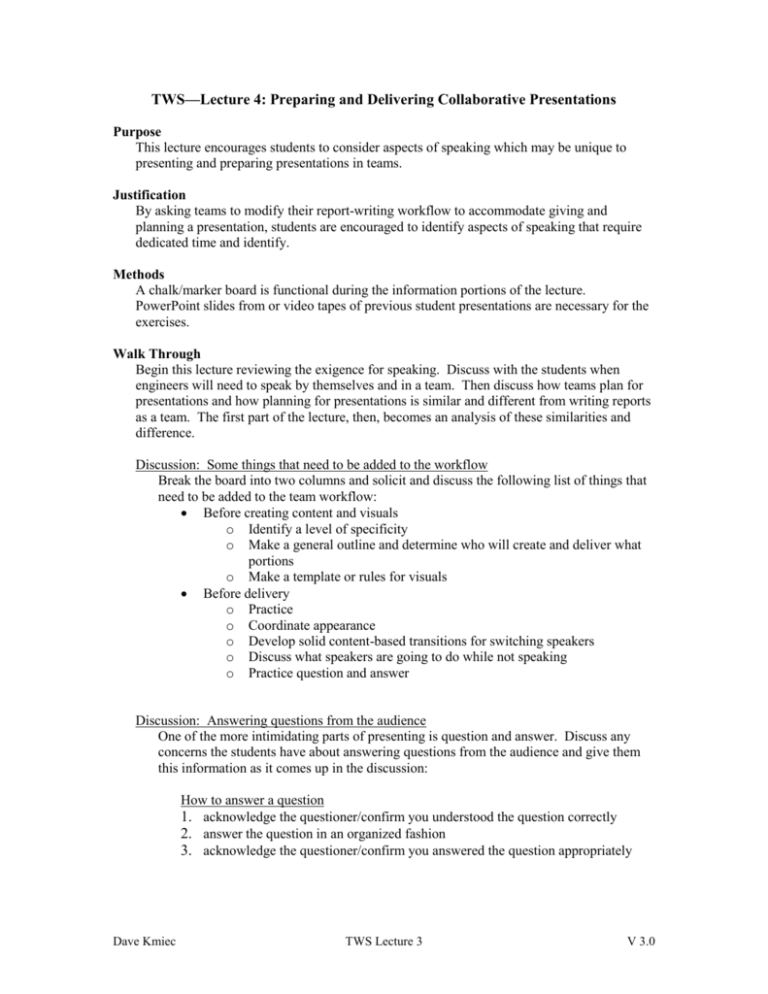
TWS—Lecture 4: Preparing and Delivering Collaborative Presentations Purpose This lecture encourages students to consider aspects of speaking which may be unique to presenting and preparing presentations in teams. Justification By asking teams to modify their report-writing workflow to accommodate giving and planning a presentation, students are encouraged to identify aspects of speaking that require dedicated time and identify. Methods A chalk/marker board is functional during the information portions of the lecture. PowerPoint slides from or video tapes of previous student presentations are necessary for the exercises. Walk Through Begin this lecture reviewing the exigence for speaking. Discuss with the students when engineers will need to speak by themselves and in a team. Then discuss how teams plan for presentations and how planning for presentations is similar and different from writing reports as a team. The first part of the lecture, then, becomes an analysis of these similarities and difference. Discussion: Some things that need to be added to the workflow Break the board into two columns and solicit and discuss the following list of things that need to be added to the team workflow: Before creating content and visuals o Identify a level of specificity o Make a general outline and determine who will create and deliver what portions o Make a template or rules for visuals Before delivery o Practice o Coordinate appearance o Develop solid content-based transitions for switching speakers o Discuss what speakers are going to do while not speaking o Practice question and answer Discussion: Answering questions from the audience One of the more intimidating parts of presenting is question and answer. Discuss any concerns the students have about answering questions from the audience and give them this information as it comes up in the discussion: How to answer a question 1. acknowledge the questioner/confirm you understood the question correctly 2. answer the question in an organized fashion 3. acknowledge the questioner/confirm you answered the question appropriately Dave Kmiec TWS Lecture 3 V 3.0 3 Types of questions questions you know—Answer the question in an organized fashion. questions you don’t know—Tell the questioner that you don’t know. If it was the beyond the scope of the presentation, say that too. If you can think of a resource where the information might be found, mention it. questions you kinda know—Tell the questioner that you’re not sure. Give them the information that you do know and hypothesize. Make sure that you specify that you’re hypothesizing when you do. Definitely give the questioner a resource. Discussion: Some things to consider when creating visuals Creating visuals for a presentation is not like writing a report. Understanding certain key points about visuals is necessary to construct visuals that effectively complement a presentation. Discuss with the class how visuals are: viewed by the audience while the speaker is speaking and therefore should be used to graphically depict information or summary material and should not be overloaded more effective if they are complementary to the speech and not verbatim or entirely different not accessed top to bottom and left to right like paper Exercise: Critiquing past presentations Show students clips from presentations they gave previously or from previous semesters. Discuss with the students what makes each effective or ineffective. Exercise: Critiquing visuals Show students PowerPoint slides from presentations they gave previously or from previous semesters. Discuss with the students what makes each effective or ineffective. Dave Kmiec TWS Lecture 3 V 3.0

